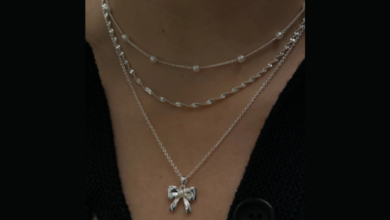Examining the Environmental Impact of CZ Bridal Ring Set

The allure of a radiant bridal ring set is definite. Diamonds, for centuries, have symbolized love and commitment, but their ancestry and processing have an important environmental footprint. In current years, cubic zirconia (CZ) has emerged as a common alternative, often touted as a livable choice.
This article delves into the environmental view of the CZ bridal ring set, exploring the moral and ecological concerns surrounding their result and use.
The Environmental Footprint of Traditional Diamond Jewelry
Diamonds, while beautiful, are not without their tangible challenges. The mining process for coarse diamonds often includes large-scale digging, impacting sensitive ecosystems. Water pollution from synthetic runoff, residence destruction, and displacement of local societies are all potential consequences.
Furthermore, the gemstone cutting and polishing process creates significant waste, requiring substantial energy and possessions. The entire supply chain, from mine to retailer, accomplishes environmental baggage.
Material Composition and Manufacturing Processes
Understanding the materials used in CZ bridal ring set and diamond ring sets is critical for evaluating their tangible impact. Diamonds are composed of clean carbon, while CZ is composed of zirconium oxide. The manufacturing processes for two together materials differ considerably. Diamond production includes high-pressure, extreme-temperature synthesis, frequently in specialized abilities.
CZ production, while requiring distinguishing temperatures and pressures, is mainly less energy-exhaustive than diamond synthesis. The metals used for the setting, in the way that platinum, gold, or silvery, also have their environmental profiles, influenced by sourcing and cultivation methods.
Ethical Considerations in Sourcing Materials
Beyond the environmental impact, ethical sourcing is lively. For the CZ bridal ring set, the focus is on responsible lab-grown results, ensuring fair labor practices, and minimizing waste all through the manufacturing process.
For diamonds, tracing the inception of the stone and supporting moral mining practices is important. Certification programs like the Kimberley Process play a role in ensuring conflict-free gemstones, but their effectiveness and reach change.
Waste Management and Recycling
The transfer of jewelry, either a CZ bridal ring set or a diamond, also has material repercussions. Proper reusing and reuse of rare metals and gemstones are crucial. Unfortunately, the current recycling foundation for jewelry is frequently underdeveloped.
Consumers can play a role by selecting to recycle or reuse existing gems rather than discarding them. Manufacturers also need to select more sustainable practices in their waste control strategies.
Consumer Choices and Their Impact
Consumers have a significant function to play in promoting environmentally trustworthy CZ bridal ring set selections. Educating oneself about the environmental and righteous implications of various options is vital.
Supporting brands dedicated to sustainable practices, urgent transparency from manufacturers, and opting for reused or lab-grown matters are all ways users can contribute to a greener industry.
Conclusion
The choice between CZ and gemstone bridal ring sets, or any jewelry, is versatile and involves environmental, ethical, and individual considerations. While the CZ bridal ring set offers a potentially livable alternative due to the allure of lab-grown type, the entire supply chain needs surveillance.
Ultimately, a more sustainable jewelry industry depends on collective operation and responsible service choices.




